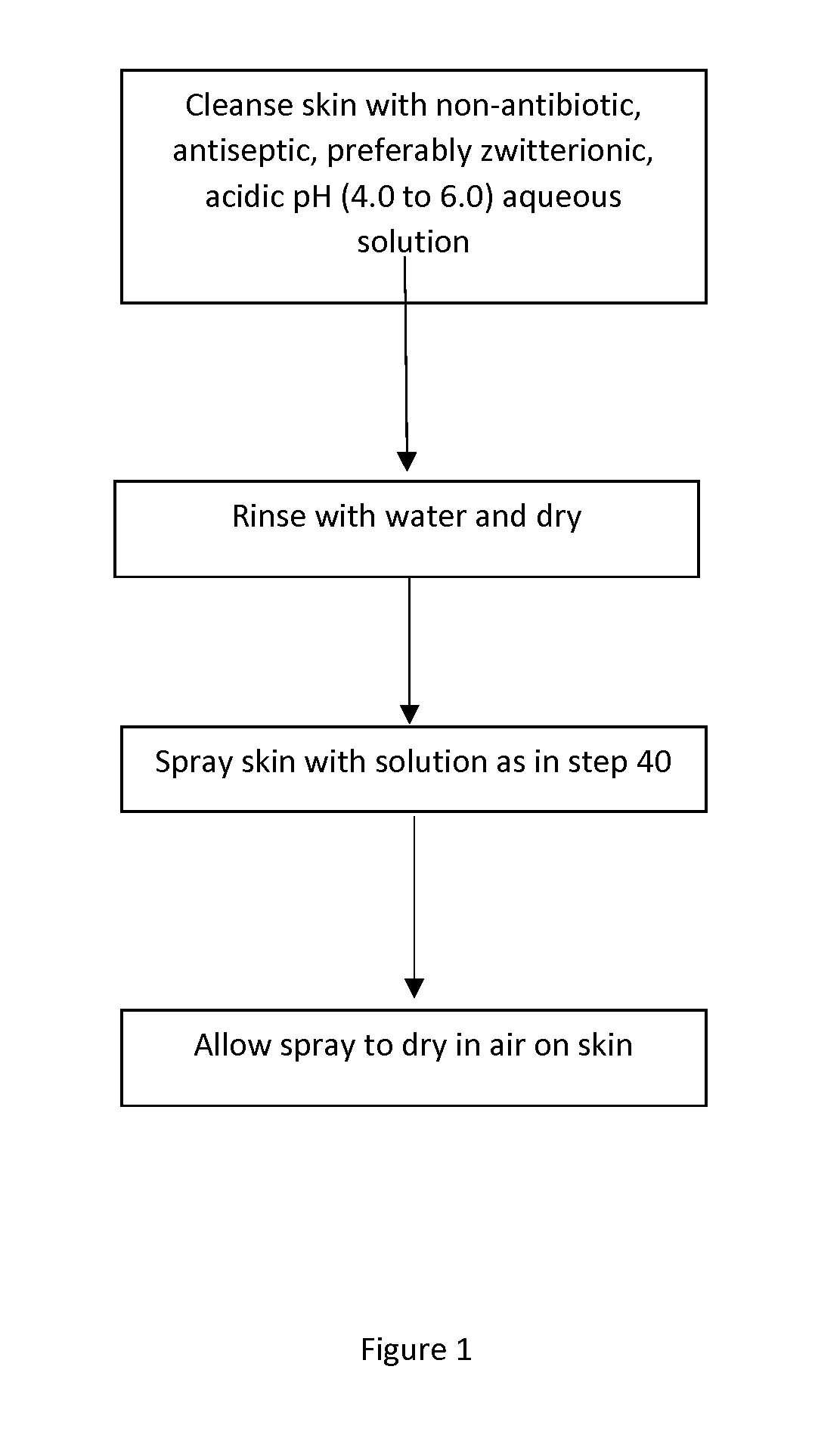Method for the Prevention and Treatment of Acne
a technology for acne and treatment, applied in the field of acne prevention and treatment, can solve the problems of flaking or redness, damage to the mantle, etc., and achieves the effects of reducing the number of acne-related infections, preventing the desquamation of dead skin cells, and promoting the recurrence of acn
- Summary
- Abstract
- Description
- Claims
- Application Information
AI Technical Summary
Benefits of technology
Problems solved by technology
Method used
Image
Examples
Embodiment Construction
[0027]The invention will now be fully described more fully hereinafter with reference to the accompanying FIG. 1 in which are illustrated some, but not all, of the concepts of the invention. Indeed, the invention maybe embodied in many different forms and should not be construed as limited to the specific embodiments set forth herein; rather, the embodiments provided in this disclosure are intended to satisfy applicable legal requirements.
[0028]In the first step of the practice of the method of the invention, which is step number 40 in FIG. 1, a skin cleansing solution with a pH from about 4.5 to 5.5 is applied to an area of the skin. Step 40 comprises massaging the cleansing solution into the skin. The area of skin selected may be where one desires to prevent acne lesions or may be skin with acne that one wishes to restore to an acne-free condition or at least having substantially reduced acne lesions. The cleanser acts to remove cellular debris, including dirt, dead skin cells, ex...
PUM
| Property | Measurement | Unit |
|---|---|---|
| time | aaaaa | aaaaa |
| time | aaaaa | aaaaa |
| time | aaaaa | aaaaa |
Abstract
Description
Claims
Application Information
 Login to View More
Login to View More - R&D
- Intellectual Property
- Life Sciences
- Materials
- Tech Scout
- Unparalleled Data Quality
- Higher Quality Content
- 60% Fewer Hallucinations
Browse by: Latest US Patents, China's latest patents, Technical Efficacy Thesaurus, Application Domain, Technology Topic, Popular Technical Reports.
© 2025 PatSnap. All rights reserved.Legal|Privacy policy|Modern Slavery Act Transparency Statement|Sitemap|About US| Contact US: help@patsnap.com

